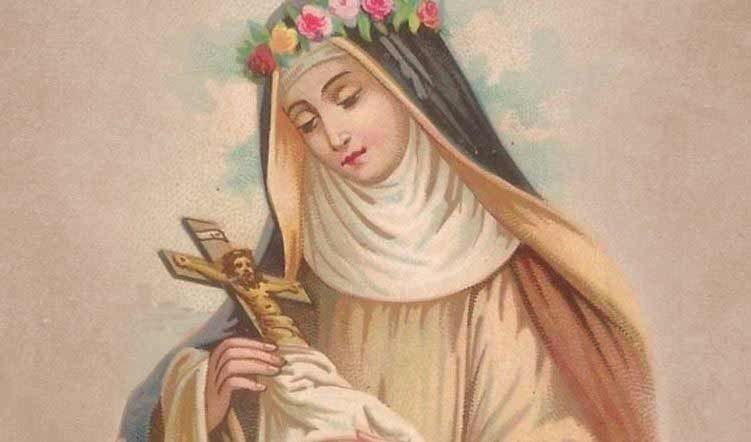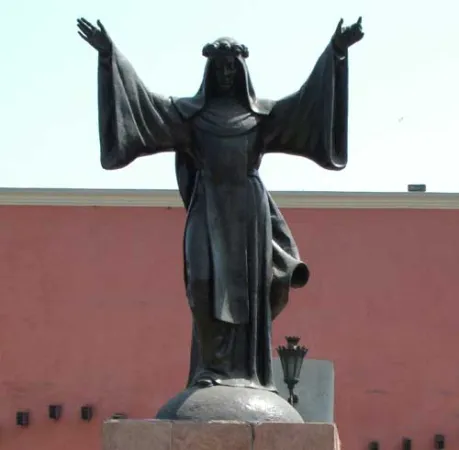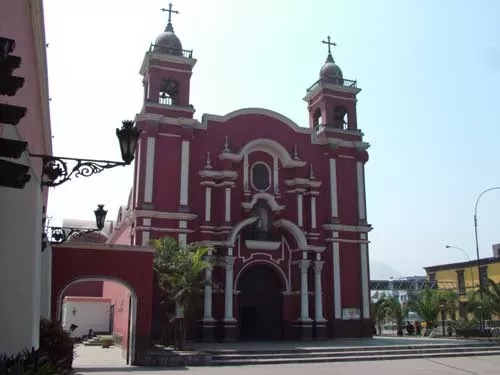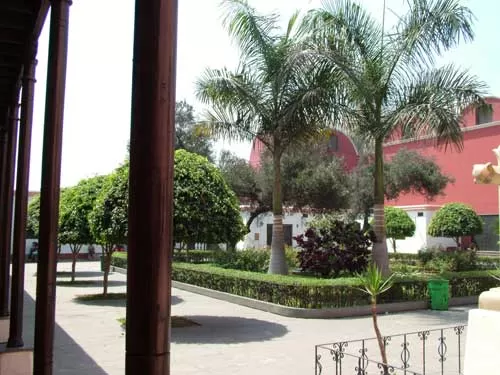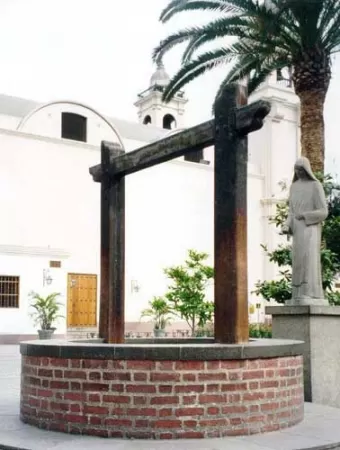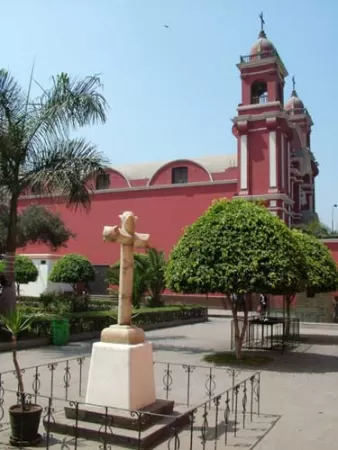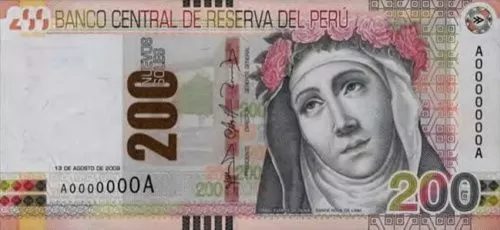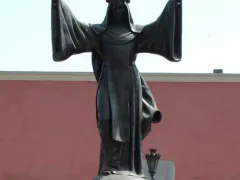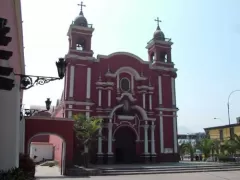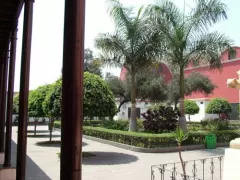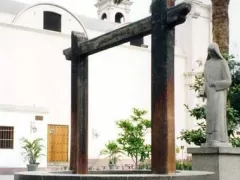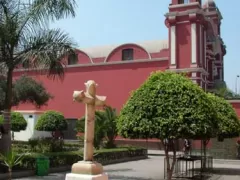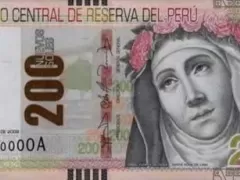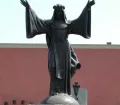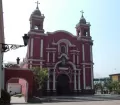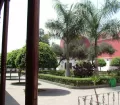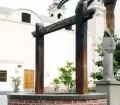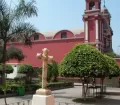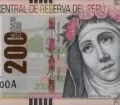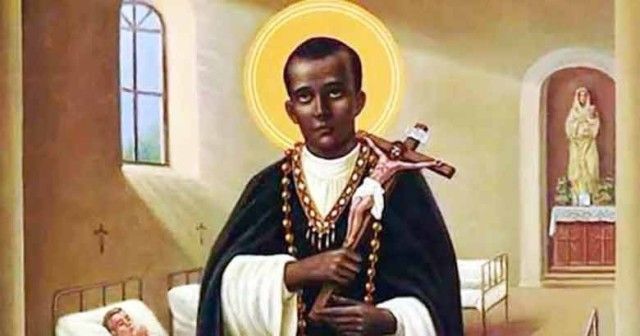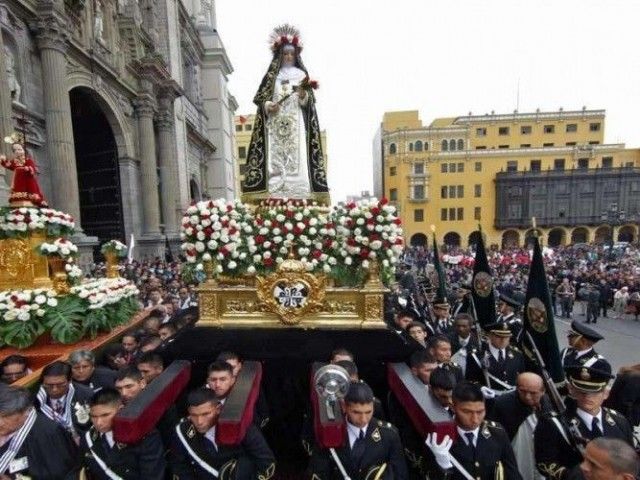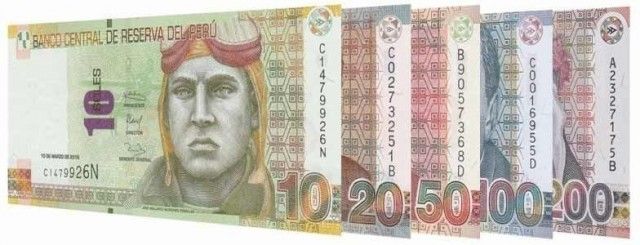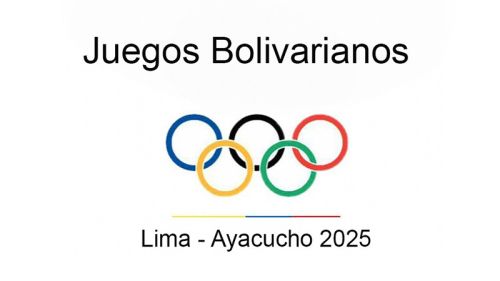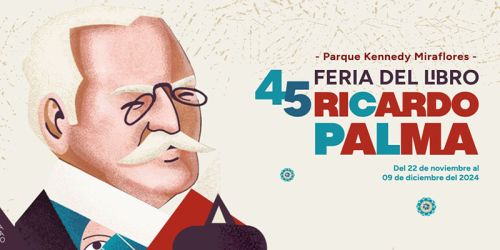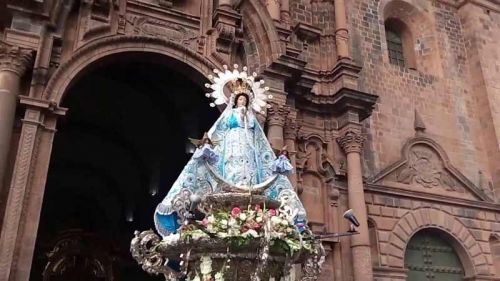Santa Rosa de Lima is the patroness of Lima, Peru, the Americas and the Philippines. Already as a child Rosa was possessed with the veneration of religion, as a young adult she lived in absolute adoration of God. Rosa filled her day with praying, hard work, self-torture and helping sick and poor people in her community. Years of self-martyrdom ended in her death aged only 31. She became the first Saint of the New World.
Santa Rosa de Lima was born on the April 20, 1586 at the Espiritu Santo hospital in Lima to Gaspar Flores, a Spaniard, and María de Oliva of Indian descent. Although baptized Isabel in the parish of San Sebastian in Lima, from early childhood on she was called Rosa because of her lovely look and her rosy cheeks. The family of 13 children was extremely poor.
Rosa spent most of her childhood in a small mining town called Quives, an indigent place located about 70 km (45 miles) northeast of Lima, where her father Gaspar worked as the administrator of the mine. Already as a child, Rosa was possessed with the veneration of every aspect of religion and spent hours staring at an image of the Madonna with her Child. In 1598 Rosa received the Sacrament of Confirmation from Lima’s archbishop, Toribio de Mongrovejo.
Having grown into an extremely attractive young woman, her parents hoped Rosa would marry well and then could support her struggling family. But Rosa refused to marry at all and instead lived a religious life following the example of Santa Catalina de Siena. She devoted herself to a life of self-mortification and solitude. Despite her family's objections, Rosa practiced extreme forms of religious observance.
After her family returned to Lima, Rosa extremely fasted and then became a vegetarian. As she disliked her appearance and the attention it brought her so much, Rosa mortified her flesh with extremely hard work and cut her hair short. She even mutilated the skin on her face and body with lye, lime and pepper and wore a thorn crown. With this extreme self-torment and self-cruelty, she wanted to focus the attention away from her beauty towards God.
In 1605 Rosa applied to join the monastery Santa Clara, but was too poor to pay the required dowry. So, she continued to live in absolute devotion to God on her own and moved out of her family's house into a small shed she built by herself on their property. Rosa filled her days with praying, hard work, self-torture and supporting and caring for homeless children, the sick and the poor in her community. She offered flowers grown in her garden on the local market and sold fine needlework and exquisite embroidery pieces, which she handmade at night, to support her family and finance her charity works.
At the age of 20 she attracted the attention of the Dominican Order and could enter the Third Order without payment. Thereafter she redoubled the severity and variety of her penances. Rosa continued with her extreme religious practices and stopped eating normal food. She survived on bread and water, only sometimes adding fresh herbs grown in her own tiny garden, and juices made of natural plants. Rosa now constantly wore a metal spiked crown concealed with roses and an iron chain around her waist.
Over 14 years of Rosa’s self-imposed ordeal and chastisement took its toll, and she died on August 24, 1617, at the age of only 31 years. Her funeral couldn't take place for two days as people queued to pay their last respects.
Already then Rosa was worshipped so much that even the Viceroy, the archbishop, representatives of all religious fraternities and many public authorities of Lima attended her funeral. She was first buried in the cemetery of the Dominican convent. Later Santa Rosa's remains were moved and laid to rest in a chapel at the Church of Santo Domingo next to her friends San Martin de Porres and Alonso Abad.
In 1667 Pope Clement IX beatified Santa Rosa; 4 years later Pope Clemente X canonized her as the first Saint in the New World and designating August 30 to her. Still today, this day is a public holiday in Peru (and many other Latin America countries) honoring the devoted and selfless patroness.
Celebrations in honor of Santa Rosa are most enthusiastic in Lima where a large procession from the Church and Convent of Santo Domingo to Lima's Cathedral on the Plaza de Armas takes place. Many followers also visit the Church and Sanctuary of Saint Rose of Lima especially on this day.
In honor of the patroness, the image of Saint Rose of Lima can as well be found on the Peruvian S/. 200 banknote.


